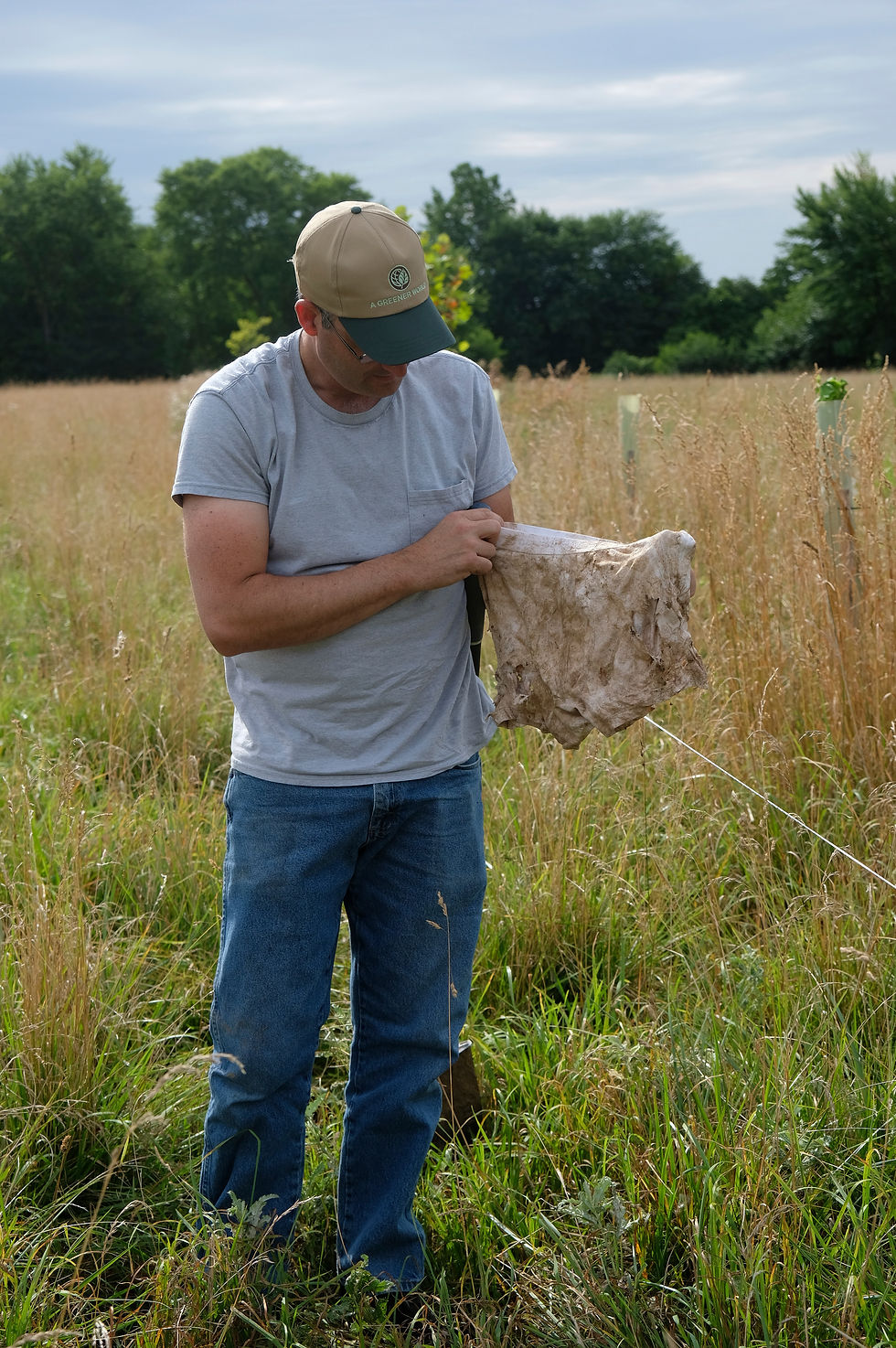
Photo: Yuri Plowden, PA NRCS State Soil Scientist (photo by Molly Rose)
Over the next month, hundreds of pairs of underwear will be unearthed. What will people find and what stories will be shared? We'd love to see your results so please share your photo and story on our webpage.
What lessons have we learned so far? It's a lot harder to dig them up than to bury them. In early June, when crops are small, it's easy to dig a hole and mark the spot with 12" flags. But 60 days later, when crops are thick and tall, finding those flags is like finding a needle in a haystack. Here's a photo of Dave Arscott, Executive Director of Stroud Water Research Center trying to find the undies in a fiber hemp field.


Results from Stroud Water Research Center (photo by Jessica Provinski)
At Cedar Meadow Farm in Lancaster County, Steve Groff's results mirrored his Cornell soil health scores. His field with the highest score, had a complete breakdown of all the cotton fibers. While his field with a lower soil health score, still had cotton remaining.


Steve Groff's best field (photo by Matt Steinruck, Big Picture Studio)
Another lesson learned so far, is how important soil moisture is to the worms and soil microbes. Many places in Pennsylvania have had below-average rainfall this summer, and fields are very dry in some places. When the soils are dry, the worms dig deeper and the soil microbes become dormant and stop feeding on the undies. This is what happened to the undies that the Chesapeake Bay Foundation buried at the Drager Farm. The undies were mostly intact after 60 days of dry conditions.

Dry conditions at the Drager Farm (photo by Kelly O'Neill)
What other lessons will we learn? Help us answer that question by sharing your photos and soil conditions. We'd love to hear from you!

Comments